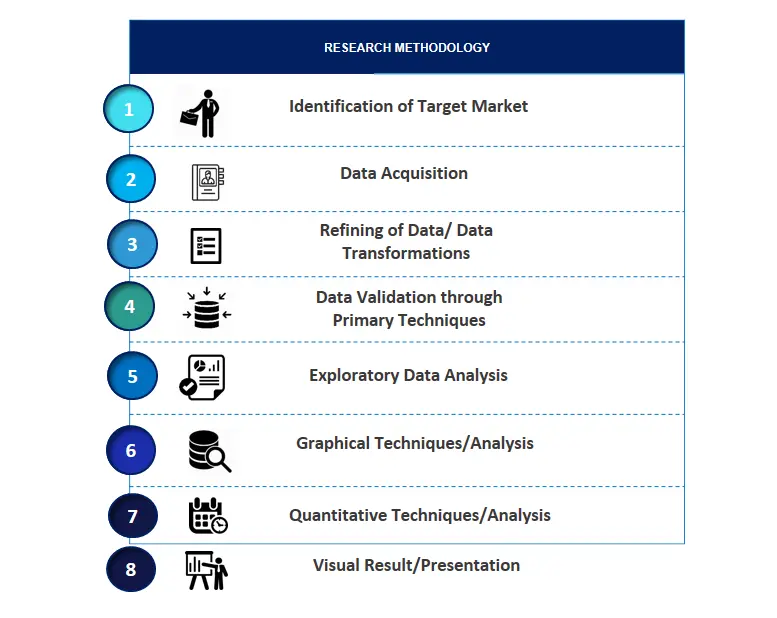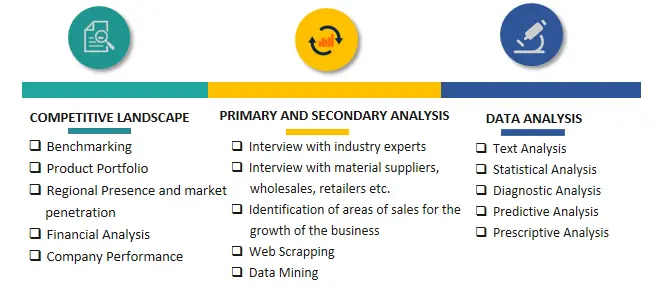
Military Robots Market Trends, Growth, Analysis, Scope, Revenue and Future Outlook
Military Robots Market Growth, Size, Trends Analysis - By Platform, By Mode of Operation, By Application - Regional Outlook, Competitive Strategies and Segment Forecast to 2034
| Published: Jan-2025 | Report ID: AERO2501 | Pages: 1 - 256 | Formats*: |
| Category : Aerospace and Defence | |||


- In February 2024, Teledyne FLIR LLC received a contract from the Canadian Department of National Defence to provide over 800 SkyRanger R70 UAS, valued at more than CAD 95 million. These drones have autonomous navigation and sensors for detecting targets. They can carry various payloads up to 3. 5 kg, including munitions, and will be donated to Ukraine by Canada.
- Kodiak Robotics and Textron Systems worked together to develop a fully autonomous military ground vehicle in May 2024. They are incorporating the Kodiak Driver, a self-driving system developed by Kodiak, inside a Textron prototype car.
- In September 2024, Boeing entered into a partnership with Sagar Defence Engineering to work on unmanned vehicle production. This agreement shows Boeing's focus on expanding in the Indian market and supports advanced unmanned system development, enhancing US-India defense and aerospace cooperation.
| Report Metric | Details |
| Market size available for years | 2021-2034 |
| Base year considered | 2024 |
| Forecast period | 2025-2034 |
| Segments covered | By Platform, By Mode of Operation, By Application. |
| Regions covered | North America, Latin America, Asia-Pacific, Europe, and Middle East & Africa. |
| Companies Covered | Northrop Grumman, Boeing, Lockheed Martin Corporation, Elbit Systems, IAI (Israel Aerospace Industries), Teledyne Technologies Incorporated, General Dynamics Corporation, BAE Systems, Thales, L3Harris Technologies Inc, EDGE PJSC Group, Textron Inc, RTX, Kratos Defense & Security Solutions, Inc, General Atomics. |
- Global Military Robots Market Size (FY'2021-FY'2034)
- Overview of Global Military Robots Market
- Segmentation of Global Military Robots Market By Platform (Aerial, Naval, Land-based)
- Segmentation of Global Military Robots Market By Mode of Operation (Automated, Human-operated)
- Segmentation of Global Military Robots Market By Application (Search & Rescue, Explosive Ordnance Disposal, Intelligence, Surveillance and Reconnaissance, Transportation, Combat Support)
- Statistical Snap of Global Military Robots Market
- Expansion Analysis of Global Military Robots Market
- Problems and Obstacles in Global Military Robots Market
- Competitive Landscape in the Global Military Robots Market
- Details on Current Investment in Global Military Robots Market
- Competitive Analysis of Global Military Robots Market
- Prominent Players in the Global Military Robots Market
- SWOT Analysis of Global Military Robots Market
- Global Military Robots Market Future Outlook and Projections (FY'2025-FY'2034)
- Recommendations from Analyst
1.1. Scope of the report1.2. Market segment analysis
2.1. Research data source
2.1.1. Secondary Data2.1.2. Primary Data2.1.3. SPERs internal database2.1.4. Premium insight from KOLs
2.2. Market size estimation
2.2.1. Top-down and Bottom-up approach
2.3. Data triangulation
4.1. Driver, Restraint, Opportunity and Challenges analysis
4.1.1. Drivers4.1.2. Restraints4.1.3. Opportunities4.1.4. Challenges
5.1. SWOT Analysis
5.1.1. Strengths5.1.2. Weaknesses5.1.3. Opportunities5.1.4. Threats
5.2. PESTEL Analysis
5.2.1. Political Landscape5.2.2. Economic Landscape5.2.3. Social Landscape5.2.4. Technological Landscape5.2.5. Environmental Landscape5.2.6. Legal Landscape
5.3. PORTERs Five Forces
5.3.1. Bargaining power of suppliers5.3.2. Bargaining power of buyers5.3.3. Threat of Substitute5.3.4. Threat of new entrant5.3.5. Competitive rivalry
5.4. Heat Map Analysis
6.1. Global Military Robots Market Manufacturing Base Distribution, Sales Area, Product Type6.2. Mergers & Acquisitions, Partnerships, Product Launch, and Collaboration in Global Military Robots Market
7.1. Aerial7.2. Naval7.3. Land-based
8.1. Automated8.2. Human-operated
9.1. Search & rescue
9.2. Firefighting9.3. Explosive Ordnance Disposal (EOD)9.4. Intelligence, Surveillance, And Reconnaissance (ISR)9.5. Mine clearance9.6. Transportation9.7. Combat support9.8. Others
10.1. Global Military Robots Market Size and Market Share
11.1. Asia-Pacific
11.1.1. Australia11.1.2. China11.1.3. India11.1.4. Japan11.1.5. South Korea11.1.6. Rest of Asia-Pacific
11.2. Europe
11.2.1. France11.2.2. Germany11.2.3. Italy11.2.4. Spain11.2.5. United Kingdom11.2.6. Rest of Europe
11.3. Middle East and Africa
11.3.1. Kingdom of Saudi Arabia11.3.2. United Arab Emirates11.3.3. Qatar11.3.4. South Africa11.3.5. Egypt11.3.6. Morocco11.3.7. Nigeria11.3.8. Rest of Middle-East and Africa
11.4. North America
11.4.1. Canada11.4.2. Mexico11.4.3. United States
11.5. Latin America
11.5.1. Argentina11.5.2. Brazil11.5.3. Rest of Latin America
12.1. Northrop Grumman
12.1.1. Company details12.1.2. Financial outlook12.1.3. Product summary12.1.4. Recent developments
12.2. Boeing
12.2.1. Company details12.2.2. Financial outlook12.2.3. Product summary12.2.4. Recent developments
12.3. Lockheed Martin Corporation
12.3.1. Company details12.3.2. Financial outlook12.3.3. Product summary12.3.4. Recent developments
12.4. Elbit Systems
12.4.1. Company details12.4.2. Financial outlook12.4.3. Product summary12.4.4. Recent developments
12.5. IAI
12.5.1. Company details12.5.2. Financial outlook12.5.3. Product summary12.5.4. Recent developments
12.6. Teledyne Technologies Incorporated
12.6.1. Company details12.6.2. Financial outlook12.6.3. Product summary12.6.4. Recent developments
12.7. General Dynamics Corporation
12.7.1. Company details12.7.2. Financial outlook12.7.3. Product summary12.7.4. Recent developments
12.8. BAE Systems
12.8.1. Company details12.8.2. Financial outlook12.8.3. Product summary12.8.4. Recent developments
12.9. Thales
12.9.1. Company details12.9.2. Financial outlook12.9.3. Product summary12.9.4. Recent developments
12.10. L3harris Technologies Inc
12.10.1. Company details12.10.2. Financial outlook12.10.3. Product summary12.10.4. Recent developments
12.11. EDGE PJSC Group
12.11.1. Company details12.11.2. Financial outlook12.11.3. Product summary12.11.4. Recent developments
12.12. Textron Inc
12.12.1. Company details12.12.2. Financial outlook12.12.3. Product summary12.12.4. Recent developments
12.13. RTX
12.13.1. Company details12.13.2. Financial outlook12.13.3. Product summary12.13.4. Recent developments
12.14. Kratos Defense & Security Solutions, Inc
12.14.1. Company details12.14.2. Financial outlook12.14.3. Product summary12.14.4. Recent developments
12.15. General Atomics
12.15.1. Company details12.15.2. Financial outlook12.15.3. Product summary12.15.4. Recent developments
12.16. Others
SPER Market Research’s methodology uses great emphasis on primary research to ensure that the market intelligence insights are up to date, reliable and accurate. Primary interviews are done with players involved in each phase of a supply chain to analyze the market forecasting. The secondary research method is used to help you fully understand how the future markets and the spending patterns look likes.
The report is based on in-depth qualitative and quantitative analysis of the Product Market. The quantitative analysis involves the application of various projection and sampling techniques. The qualitative analysis involves primary interviews, surveys, and vendor briefings. The data gathered as a result of these processes are validated through experts opinion. Our research methodology entails an ideal mixture of primary and secondary initiatives.



Frequently Asked Questions About This Report
PLACE AN ORDER
Year End Discount
Sample Report
Pre-Purchase Inquiry
NEED CUSTOMIZATION?
Request CustomizationCALL OR EMAIL US
100% Secure Payment






Related Reports
Our Global Clients
Our data-driven insights have influenced the strategy of 200+ reputed companies across the globe.




















